-
Posts
346 -
Joined
-
Last visited
Content Type
Profiles
Forums
Store
Help Articles
Posts posted by pep.
-
-
I usually do pork loin overnight at 55 °C, which would be between your 8 and 12 hours, simply due to convenience. I wouldn't go longer than 12 hours on loin. What would the need be? There's not much connective tissue in that cut.
-
If you heat the water up before putting it in the container, surely maintaining the temperature at level is not going to take 2000 watts.
Of course, but heating up large amounts of water is at best a hassle (and may not be possible at all if you have a lot of things cooking at the same time).
-
Wattage of the heating element is not that important, steady state consumption is way way lower, see a post in the old SV topic: Heat loss and steady state energy consumption of sous vide cookers.
Extremely good insulation may make PID tuning more difficult (less heat loss to counteract overshoot).
Low wattage makes ramping up slower, but you can start with hot water.
With a 1500W heating element you can stabilize a 130L bath tub to 55°C easily, see "cooking a suckling pig sous vide in a bath tub" (just for fun!).
Well it somewhat is if you use that circulator mainly for vegetables (temps in the high 80s °C, relatively short cooking times).
-
I was wondering about that (part fo the reason I asked).
If you need it primarily for sugar, I'd use boiling water for a quick sanity check. The Thermapen should include it a factory calibration certificate traceable to NIST/UKAS standards (depending on where you bought it), though.
-
The ovulation thermometer would only be for calibration purposes (for the Thermapen that's suposed to show up one of these days), since It's apprently precise enough to use for this purpose. But I do wonder whether that is actually more accurate than boling water at sea level.
Heck, why not?! I love precise and accurate instruments

Yes, but you have to calibrate near your intended usage temperature(s) as temperature deviations are usually not (or at least: don't need to be) linear. Calibrating at 37 °C is pretty useless for accuracy at 120 °C.
-
I'm looking for a second circulator (mainly for doing vegetables at the same time as animal protein). The two units I'm really considering are the Addélice SWID and the new Vac-Star SousVide Chef II. Any thought's? The Vac-Star seems much improved over the first version and has a very powerful pump with a slightly less powerful heating element than the SWID. For the higher temps for vegetables, the 2000 W heater of the SWID seems very useful to me. Furthermore, the SWID uses more stainless steel and looks quite easy to clean. Has anyone actually used one yet?
-
The ovulation thermometer would not be accurate for sugar work temperatures (> 100 °C), even if it's not destroyed outright at these temperatures.
-
You will have a hard time heating the larger volume, plus the temperature may be less uniform throughout the water bath (because the pump is not mixing the water enough).
-
I would not freeze cooked potatoes. I did that once with potato salad and the results were pretty nasty (completely pasty-mealy).
-
The new head is dishwasher safe, which is the main benefit AFAIK. I'm not sure, but the old one may not have had the silicone grip-band, either.
-
Can anyone pinpoint the diferences between the iSi Gourmet and Gourmet PLUS models?
The "Gourmet" without the "Plus" had a aluminium-cast head instead of a stainless one.
-
Yeah, but the Solar line (not Vitavit Solar!) is ancient!
However, I would sure like that Korean Vitavit. Funny that it seems to be really Korea-specific. I didn't find anything of that kind on the Fissler Taiwan site.
I've got an old Blue Point 4 liter model and Vitavit Edition 12 liter model. Both have worked fine so far (although I should re-fasten the screw of one of the Blue Point's handles).
-
First, I heard back from Fissler, and they are sending me a replacement valve for the one lid. They also said, " As for the 'Asian' pressure cooker (p/c), you are probably referring to the Vitavit Premium Solar line. It looks like the Vitavit Premium, which we have a small selection in our Los Angeles showroom. The biggest differences are that the Solar has a half circle black and reddish pattern around the pot body, the p/c lid has 3 settings as you mentioned, and the regular lid knob shape is differently shaped as well.
I've got no idea what "Vitavit Premium Solar" is supposed to be, as I didn't find any evidence of such a line on the web. Fissler Germany only has three current lines of pressure cookers (the Blue Point has been discontinued a few years ago): Vitavit, Vitavit Premium, and Vitavit Edition. All have the new style knob control of the intended pressure setting. The plain Vitavit only has two settings, corresponding to the old-style one or two bars. The Vitavit Premium and Vitavit Edition have a third setting for pressure-less steaming, NOT a third pressure level.
-
Boiling takes care of everything except Clostridium botulinum. If the lids are puffed up then they definitely are not safe. Perhaps the tomatoes are acidic enough. Open a jar and test with a pH strip or meter.
That should give you the proper information. Out of the range toss.
You don't kill the spores by boiling, but what i've read so far, the toxin should be destroyed (as always, depending on temp and time, of course). I guess I'll ask on the MC forum. The pH test is a good idea, though.
-
Re-boiling won't get rid of toxins that have been created by bacteria, like, say, botulism. These toxins can be colorless, odorless, and fatal in very small amounts.
Actually, as far as I know botulinum toxin is heat-labile. The spores are heat-resistant. That's why I'm asking. I'd have to test one of the jars, but I would assume that the tomatoes are relatively acidic, which should hamper the growth of clostridium botulinum (but probably not acidic enough to be safe unheated).
There are several categories of foodborne illness. You've got pathogens which infect the body and make you ill, like e. coli, parasites, like worm eggs in fish, and, toxins created by bacteria and other organisms.
Yes, I know that of course. I should have been more specific with my question. In this situation, I'm mostly concerned with bacterially produced toxins. Everything else should be pretty dead.
It's not just the foodstuffs and how they were handled, I'd also be suspicious about the 'clean' jars. Canning requires sterilized jars. Based on just the handling of the jars, I'd toss the lot.
I wrote "clean" because I was not there to inspect her procedure. However, she has made jams and various vinegar-pickled things all her life, so I'm not overly concerned with that aspect.
-
Last year, my mother "canned" some tomatoes and some mixed vegetables (think ratatouille) by bringing them to a rolling boil and filling them into clean twist-off jars while hot.
Can any of these preserves be made safe to consume (if they have not obviously spoiled), e.g. by re-boiling them for X minutes, or does she have to throw them out?
-
I tried this once with a foamed crème anglaise, but it didn't work very well. The foam deflated rather visibly before the caramel could properly form.
-
Made the red wine glaze yesterday (with venison instead of beef for the bones and two thirds of the meat, I also roasted the bones). I'm not sure if the reduction step is very helpful, flavorwise. I'm not sure if I could detect a difference between the pure beef version from the book and my venison variation. I'm not sure I can detect the red wine very much. Maybe I should have used something heavier? Of course the glaze itself has a lot of body. We'll see how it will do with venison loin on Saturday.
-
Smelled normal after thawing, no freezer burn that I could see. Used a bit of beef to bolster the venison I used to make the red wine glaze from MCaH. This I've already tasted (well, the glaze) - completely normal.
The rest (some more beef, two duck breasts) I've ground up with pâté spices to make a pâté de campagne. It's waiting in the freezer for Wednesday, I didn't have the energy to finish the pâté yesterday evening.
-
I'll second the scale. Being able to measure with 0.1 g or better 0.01 g accuracy is a must.
I'd say the 0.01 accuracy isn't better, it's a must for the majority of the hydrolloids, sequestrants, buffers and stabilizers used in "modernist" cooking.
That depends on the batch size you are making ;-)
-
I'll second the scale. Being able to measure with 0.1 g or better 0.01 g accuracy is a must. I'd also get the Thermapen - one of the most useful gadgets in my kitchen. As for the ISI whips, one is enough for starting out (I've got two, but I hardly ever use both).
-
Next week, we are having a large game-themed dinner for 20 people. The main course is supposed to be venison loin. Due to the limited equipment at the designated location, I normally use cook-and-chill to prepare meats sous-vide beforehand and finish them off on-site in the pan or oven. However, I've got some concerns doing this with venison. Due to the holidays over here, I've to get the meat from the butcher on Wednesday while the dinner is on Saturday.
Regarding storage, should I
- Freeze the venison on Wednesday
- Keep it in the fridge until Saturday
- Pasteurize the meat sous-vide and then freeze it (with a higher than core-temp to keep the cooking time reasonably low)
Furthermore, should I do the sous-vide step at all or am I better of trying to get it right with the *ahem* somewhat antiquated resources at the dinner location? I guess I could bring my circulator and a container, but it would get kinda crowded in the kitchen then.
- Freeze the venison on Wednesday
-
If they have been vacuumed, there will be no rancidity - fats need oxygen to go rancid. I don't see any reason to not use them.
Yes, but there is always some residual oxygen in a vacuum bag and over time, even that may cause some rancidity. To not waste fresh ingredients, I'll fry up and taste a small sliver of the frozen meats before using them.
-
i've some vacuum-packed meats in the freezer that should have been used up a few months ago (i.e. they are about a year old: beef, duck breasts, pork fatback). Are there any arguments besides possible fat rancidity against using them for stocks/sauces or patés/terrines?


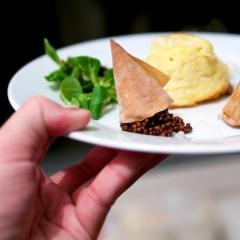
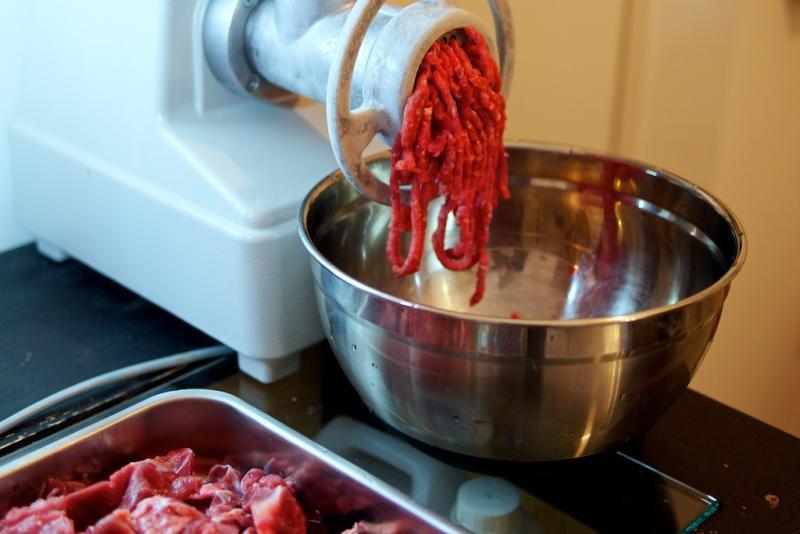
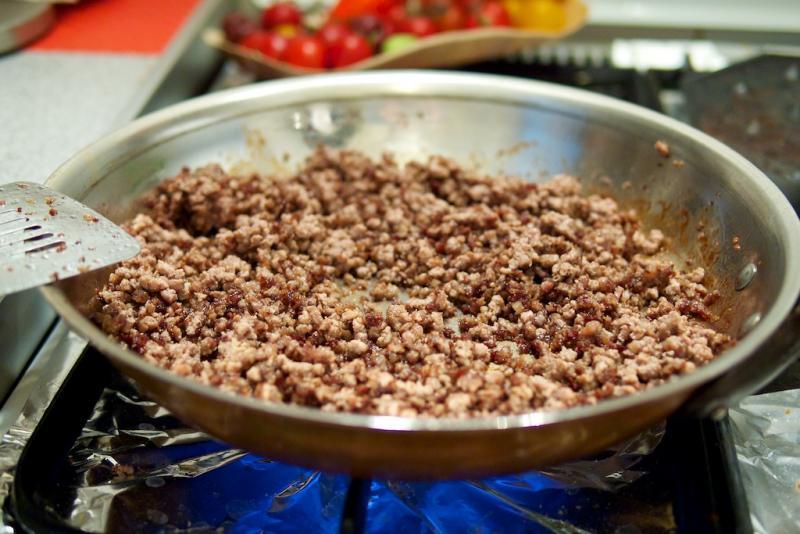
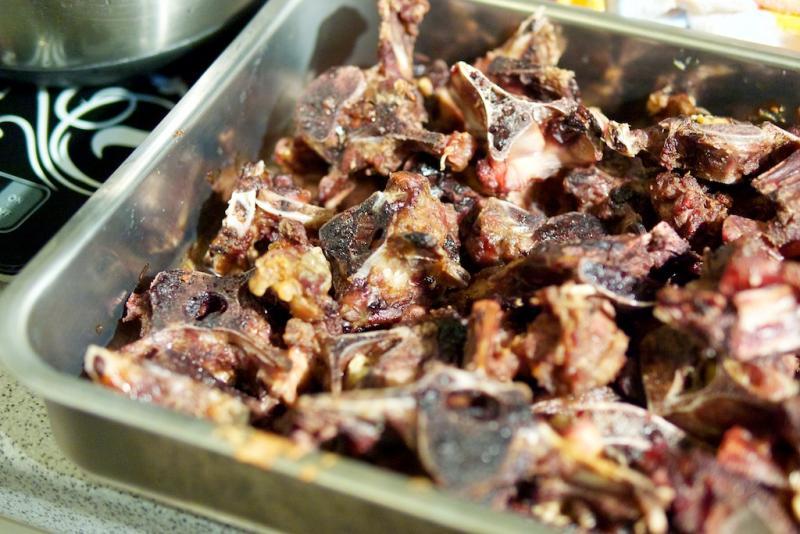
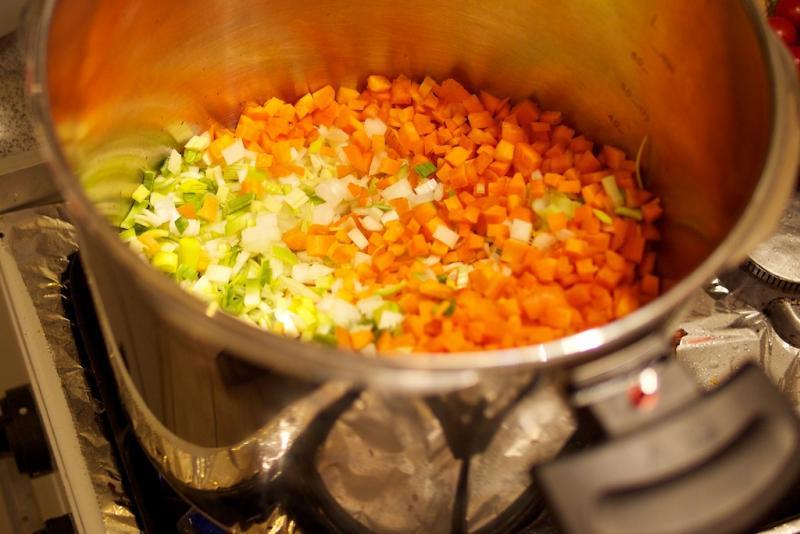
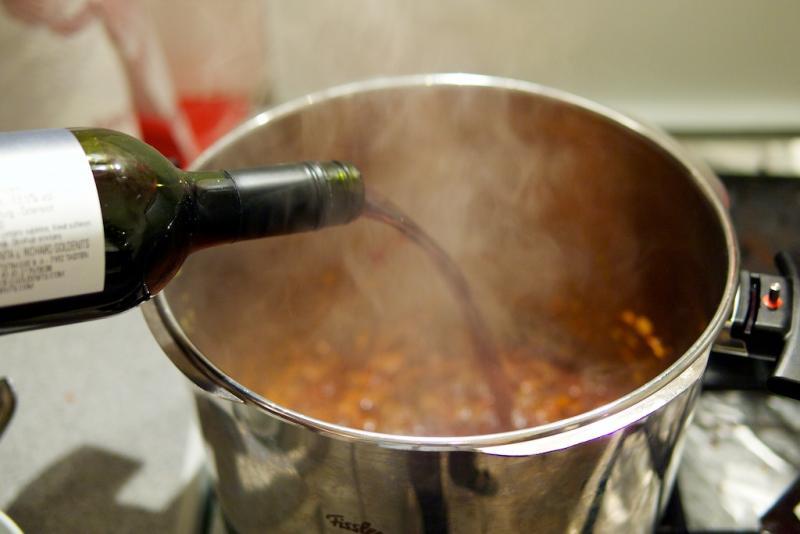

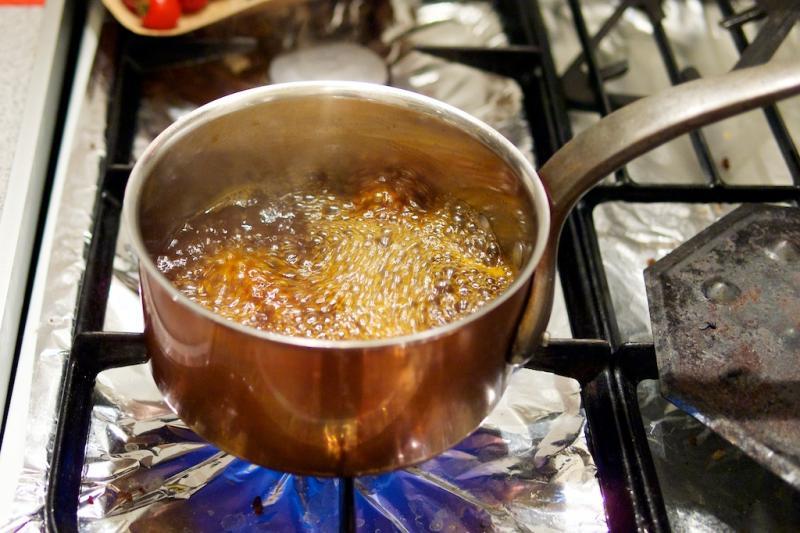
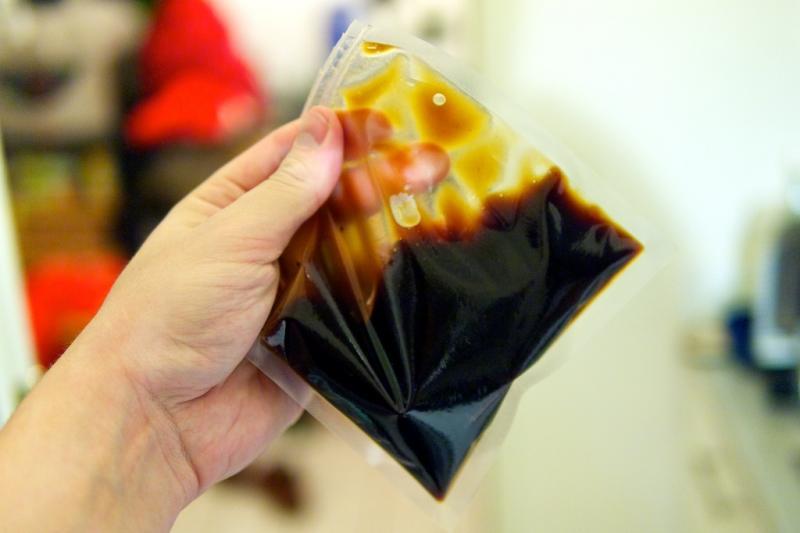
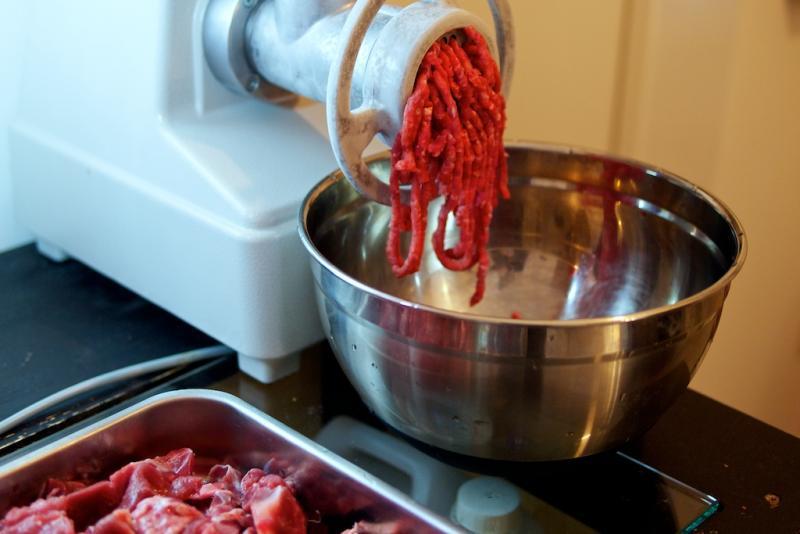
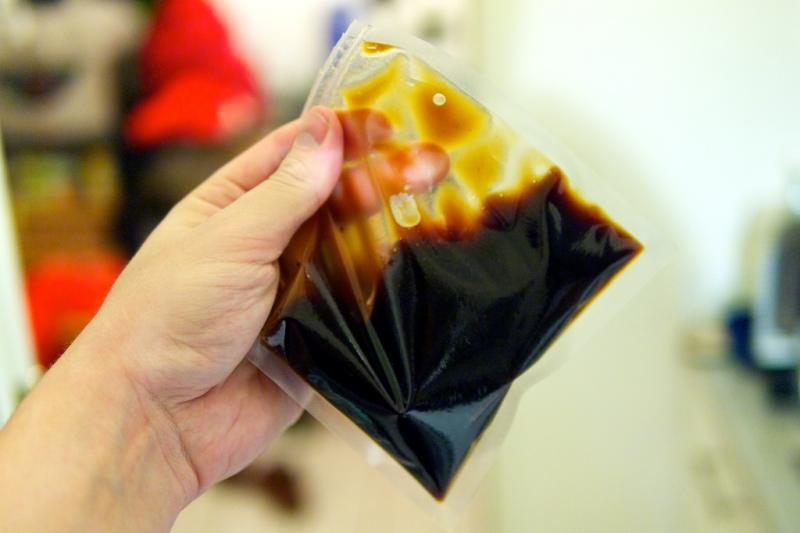
The Terrine Topic
in Cooking
Posted
Pâté en croûte de Faisan and Terrine de chevreuil et canard:
The terrine was made sous-vide while the pâté was cooked conventionally (too a core temperature a tad to high, I'd say, but all my recipe books were very conservative in that regard). The pâté includes dried figs stewed in port, as well as pistachios. Both were made with curing salt.
For the (campagne-style coarse grind) terrine I included some beef as a filler meat, but no lard, which left it not as unctuous as it ought to have been. A small amount of veal was included in addition to the pheasant meat in the pâté. The crust was made with suet (which I should have chopped more finely). Both tasted quite nice, though.